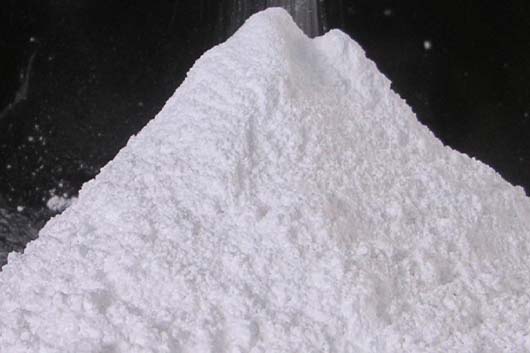In the realm of polymer science, constant innovation is the key to unlocking new possibilities and enhancing material performance. One such innovation that has gained prominence is the incorporation of talc in polymers. Talc, a naturally occurring mineral, has proven to be a game-changer in the polymer industry, elevating performance standards and opening up new avenues for applications.

Understanding Talc-Infused Polymers
Talc, chemically known as magnesium silicate, is a versatile mineral with a wide range of industrial applications. In recent years, its role in the polymer industry has gained significant attention. Talc is finely powdered and added to polymer formulations to exploit its unique physical and chemical properties.
One of the primary reasons talc is incorporated into polymers is its ability to improve stiffness and dimensional stability. Talc particles act as reinforcing fillers, strengthening the polymer matrix and reducing deformation under load. This enhancement in stiffness is particularly valuable in applications where structural integrity is crucial, such as automotive components and construction materials.
Benefits of Talc-Infused Polymers
Stiffness and Rigidity:
Talc is renowned for its exceptional stiffness-enhancing properties. When added to polymers, it creates a composite material that boasts increased rigidity without compromising other mechanical properties. This is particularly advantageous in applications where dimensional stability is paramount.
Impact Resistance:
Beyond its stiffness-improving qualities, talc also contributes to enhanced impact resistance. The combination of talc and polymers results in a material that can withstand sudden impacts and shocks, making it ideal for applications like durable packaging and impact-resistant components.
Thermal Conductivity:
Talc's high thermal conductivity makes it a valuable addition to polymers, especially in applications requiring effective heat dissipation. This property is harnessed in electronics, where polymers reinforced with talc help manage heat generated by electronic components, preventing overheating and ensuring optimal performance.
Cost-Effectiveness:
Talc is not only an effective performance enhancer but also a cost-effective filler. The addition of talc allows manufacturers to achieve desired material properties without relying solely on more expensive components. This makes talc-reinforced polymers an economically viable choice for various industries.
Applications of Talc-Boosted Polymers
Automotive Industry:
Talc-reinforced polymers find extensive use in the automotive sector. Components such as door panels, dashboard parts, and various interior and exterior elements benefit from the enhanced stiffness and impact resistance provided by talc. This results in lighter yet robust automotive parts, contributing to fuel efficiency and overall vehicle performance.
Construction Materials:
In the construction industry, where durability and strength are paramount, talc-boosted polymers are making a mark. From pipes and fittings to profiles and sheets, talc incorporation enhances the structural integrity of these materials, ensuring longevity and resilience in diverse environmental conditions.
Packaging Solutions:
Talc's impact resistance makes it a preferred choice for packaging materials. Crates, containers, and other packaging solutions benefit from the added strength and durability, safeguarding the packaged goods during transportation and handling.
Consumer Electronics:
With the increasing demand for lightweight and heat-resistant materials in the electronics industry, talc-reinforced polymers have found a niche. From casings for electronic devices to connectors and heat sinks, these materials provide the necessary combination of strength, thermal conductivity, and cost-effectiveness.
Challenges and Considerations
While the benefits of Talc-Infused Polymers are evident, it's essential to consider certain challenges associated with its use. The dispersion of talc particles within the polymer matrix, for instance, requires careful attention to ensure optimal performance. Additionally, the choice of talc grade, particle size, and surface treatment can significantly influence the final properties of the polymer composite.
Future Prospects and Ongoing Research
The journey of talc in the realm of polymers is far from over, with ongoing research and development paving the way for even more advanced applications. Researchers are exploring new methods to tailor talc-polymer composites for specific needs, tweaking parameters such as particle size, surface modifications, and blending ratios. This continuous refinement is expected to unlock novel possibilities, addressing challenges and expanding the range of industries that can benefit from this innovative synergy.
Furthermore, the environmental sustainability aspect of talc-boosted polymers is gaining attention. As industries increasingly prioritize eco-friendly practices, talc's natural abundance and recyclability make it an attractive choice. Talc-reinforced polymers have the potential to align with global sustainability goals by offering durable and recyclable materials, reducing the environmental impact associated with certain traditional polymer formulations.
Championing Innovation in Material Science
The success story of Talc-Infused Polymers underscores the importance of embracing innovation in material science. As industries evolve and consumer expectations shift, the need for materials that balance performance, cost-effectiveness, and sustainability becomes more critical. Talc, with its multifaceted contributions, exemplifies the potential of combining natural resources with cutting-edge technology to create materials that meet the demands of the future.
In conclusion, the journey of Talc-Infused Polymers is a testament to the dynamic nature of material science. From its humble origins as a mineral with diverse industrial applications, talc has emerged as a catalyst for enhancing polymer performance. As we look ahead, the collaboration between talc and polymers is poised to continue reshaping industries, driving innovation, and setting new benchmarks for material excellence in the years to come.
Discover the Talc Advantage with A.N. Enterprises
As pioneers in material innovation, we invite you to explore the transformative potential of talc-boosted polymers. Elevate your products to new heights with our expertise in tailoring talc-polymer composites for your specific needs. Whether you're in automotive, construction, packaging, or electronics, our commitment to excellence ensures that your materials stand out in terms of performance, durability, and cost-effectiveness. Join us on the forefront of material science and revolutionize your industry with A.N. Enterprises – where the power of talc meets the precision of innovation. Contact us today to embark on a journey towards superior polymer performance.